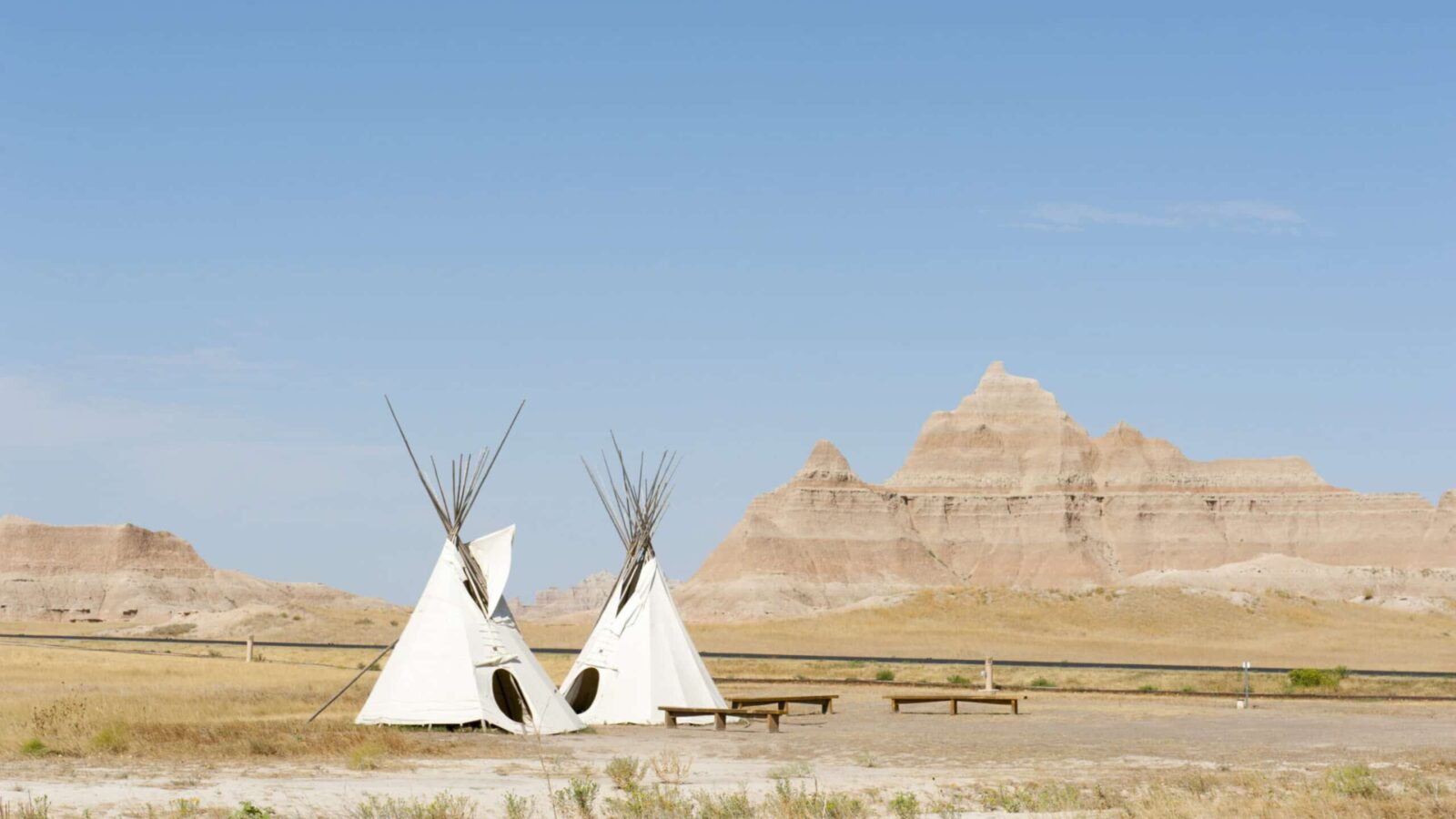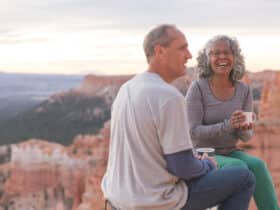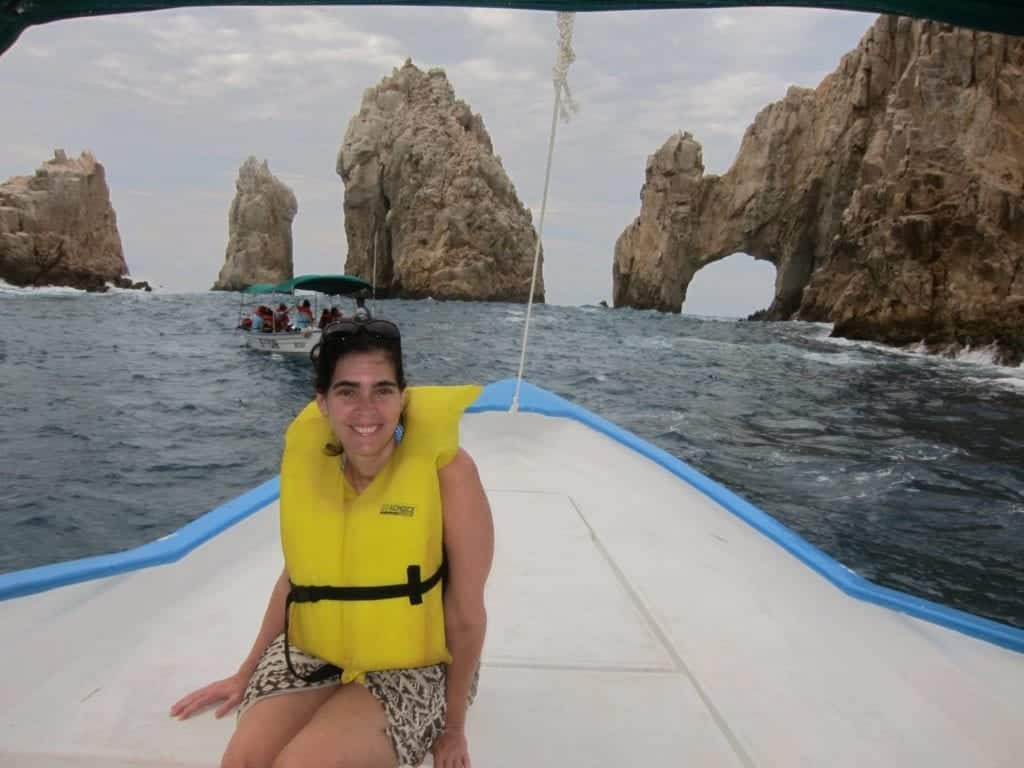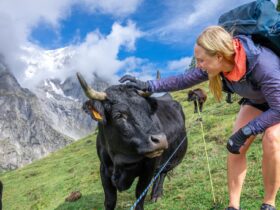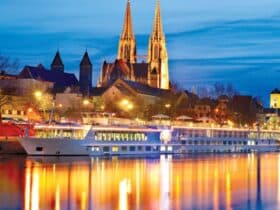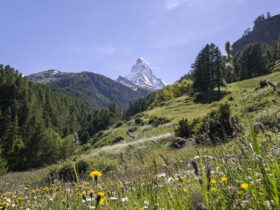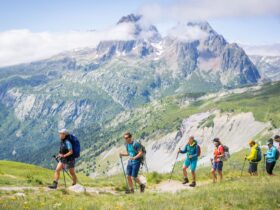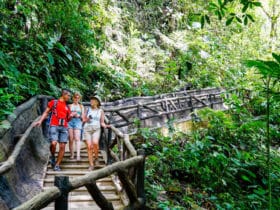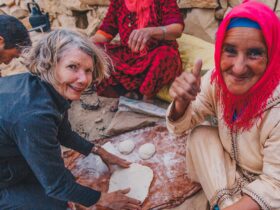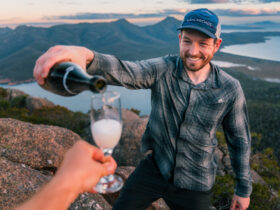- I joined Trafalgar’s National Parks and Native Trails of the Dakotas tour to learn more about the Tribal Nations of the region.
- On this nine-day motor coach tour, our group visited reservations, heard personal stories from First Nations communities, and learned about the culture through dance, food, history, and language.
- This tour doesn’t just focus on Tribal Nations, it also contributes to them. All the proceeds of the Indigenous experiences on this tour go directly to the participating communities.
- There are also stops at national parks including Badlands and Mount Rushmore.
I’ve long been interested in America’s Indigenous communities but my desire to learn more about the Tribal Nations of the Dakotas ramped up a few year ago, when my teenage son Alec spent a summer volunteering at a children’s camp on the Pine Ridge Reservation in South Dakota.
His experience left a big impression and sparked a deeper interest to further understand the history and current experience of the Indigenous people that he had built personal relationships with.
U.S. TOURS: 10 Best U.S. Tours This Year and Next
When I had the chance to join Trafalgar’s National Parks and Native Trails of the Dakotas guided tour, I jumped at the opportunity.
On this nine-day group motor coach tour, I learned how First Nations communities have connected to the land for generations and how they continue to honor this connection. Visits to Pine Ridge, Rosebud, and Standing Rock reservations offered a human perspective, introducing me to members of these Tribal Nations, who shared their personal stories as well as their efforts to establish tribal tourism as a viable source of community income.
This immersive look into the Dakota’s Indigenous communities was punctuated by stops at national parks, including Badlands, Mount Rushmore and Theodore Roosevelt, surrounding me with breathtaking natural beauty along the way.
Things to know about Trafalgar’s National Parks and Native Trails of the Dakotas tour
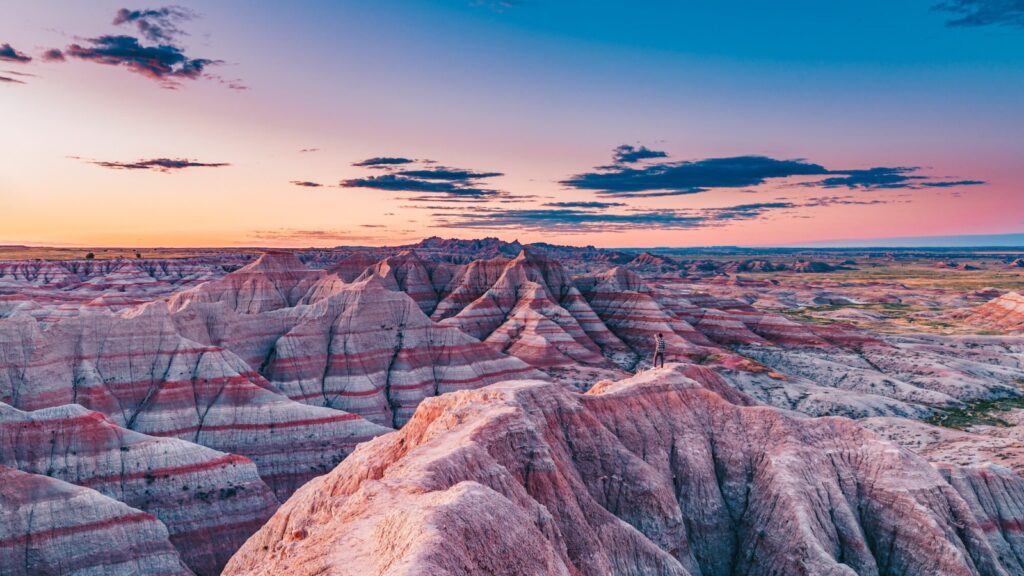
- The tour doesn’t sugar-coat the harsh history or reality of contemporary life on the reservation, where poverty, unemployment, and addiction persist.
- 100% of the proceeds of Indigenous experiences on Trafalgar tours go directly to the participating communities.
- There’s a hands-on component as you learn to make herbal tea from ancient tribal recipes.
- There are light moments, but overall it’s a profound learning experience. I wouldn’t recommend it for children younger than 12.
- Trafalgar’s Be My Guest experiences foster a human connection; you’ll gain insight into the lives of locals as you have lunch with members of the Indigenous Lakota tribes in South Dakota.
- There were several participants with mobility issues, using walkers and wheelchairs, who were fully able to participate.
- Though a deeper understanding of Native American culture is a focus, visiting iconic national parks is woven throughout the itinerary.
- Hotels are clean and comfortable.
- Breakfast at the hotel each day and many additional meals, including several on reservations, are included. When meals are not included, your Travel Director is ready with multiple recommendations at a variety of price points.
- Your Travel Director is with you every step of the way. On my tour, Travel Director Randy even gave out his cell phone number for round-the-clock accessibility.
- Our new coach had Wi-Fi and screens where relevant videos pertaining to Native American culture and history were shown.
- There were approximately 30 participants on a bus that seated twice that number, so we had room to spread out.
GOOD TO KNOW: What to Know About Trafalgar Before You Book
Tour highlights
- Wounded Knee Memorial
- Rosebud Indian Reservation
- Hands-on tea workshop at Standing Rock Reservation
- Mount Rushmore National Park
- Theodore Roosevelt National Park
- Badlands National Park
How to book
To book Trafalgar’s National Parks and Native Trails of the Dakotas tour, you can either book directly through Trafalgar or you can buy via a tour-specialist online travel agent like Travelstride, Tourhub, or TourRadar.
Important details
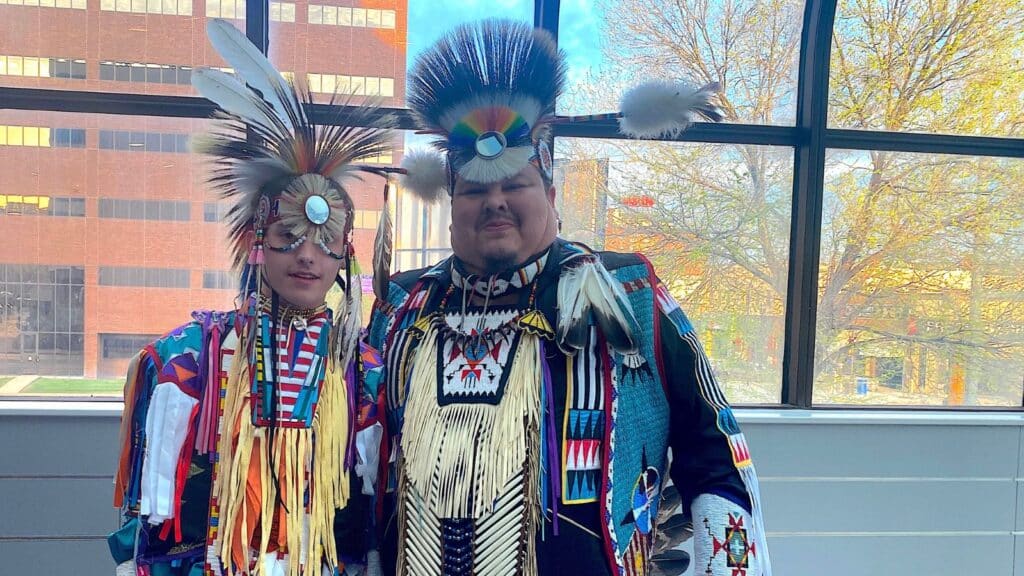
Itinerary overview
Day 1
The tour starts in Rapid City, South Dakota. Most guests arrive in the late afternoon, taking the hotel shuttle directly from the airport to the Rushmore Hotel and Suites. After you’ve freshened up, get ready for the welcome dinner at the hotel where you’ll meet Stephen Yellowhawk and his young son, who will introduce you to the history of his Sioux people and perform a traditional dance.
Day 2
After breakfast, we departed for the Oglala Lakota Living History Village. We met local guide Ivan Sorbel, who expressed how deeply his Lakota people are bound to their land, customs and ancestors.
Next, a visit to Badlands National Park presented dramatic scenery, where the prairie grassland blends with rugged geological formations of eroded buttes, spires and pyramids.
We arrived at Pine Ridge Indian Reservation in time for lunch, meeting with Ivan once again, who escorted us to Wounded Knee Memorial, site of the 1890 Massacre where nearly 300 Lakota people were murdered by soldiers of the United States Army.
Dinner is on your own in Rapid City. There are numerous restaurants within a five-minute walk of the hotel. We enjoyed the chili at the Firehouse, located in a re-furbished firehouse.
Day 3
We started the day visiting Mount Rushmore, where the 60-foot-tall faces of four American Presidents are carved into the massive granite.
Next, it was on to the Crazy Horse Memorial to see the striking monument of the famous Oglala Lakota warrior, a work in progress since 1948. A visit to the museum and a guided walk at the base of the mountain immersed us in the land and its people. Lunch was independent at the onsite restaurant.
Dinner in Rapid City is at your choice of nearby eateries. I splurged on a juicy steak at upscale Delmonico Grill.
Day 4
After breakfast, we packed our bags, as we were headed to a new hotel for the next two nights. Our first stop was the St. Francis Mission on the Rosebud Indian Reservation, home to the Sicangu Lakota Oyate Nation. The church was a cross-cultural blend of traditional Christian symbols mixed with visually distinctive Native American elements, such as beaded altars and pulpits with buffalos carved in the woodwork.
ELDER TRAVELERS: 8 Best Senior Travel Tour Companies
Next, we met with visionary tribal member Matte Wilson, who runs a program that addresses issues such as food insecurity, food sovereignty and regenerative agriculture, driving home the point that food is much more than what we eat. Matte’s aim is to reconnect tribal members with their buried agricultural legacy that was disrupted long ago, when his people were displaced by European settlers. We were treated to a wonderful meal featuring reservation-grown produce, tender buffalo, and wild rice.
Our last stop was Sinte Gleska University for a lecture by Lakota elder and professor emeritus Victor Douville, that touched on astronomy and art.
We had dinner on our own at our new hotel, Arrowwood Resort & Conference Center at Cedar Shores, situated on the banks of the Missouri River.
Day 5
The future of the Lakota Nation took center stage as we joined Marla C. Bull Bear, Executive Director of Lakota Youth Development program that helps tribal youth reclaim their language and culture. The Rosebud Reservation teens who frequent the program put on an original play that amplified the intergenerational trauma they face. They served us lunch using ingredients such as buffalo and locally-foraged choke cherries.
On our drive back to the hotel, we stopped to see the striking sculpture Dignity: of Earth & Sky, a 50-foot-high, stainless-steel structure of an Indigenous woman receiving a star quilt.
Dinner was on our own, either back at the Arrowwood Resort or at Al’s Oasis, a truck-stop diner near the hotel.
Day 6
After breakfast, we checked out of the hotel and headed to South Dakota’s capital, Pierre, for a self-guided tour of the State Capitol building.
We crossed the border into North Dakota and immersed in Plains Indian History at the Standing Rock Indian Reservation. We met Sunshine, a reservation resident who demonstrated how the Lakota and Dakota people harness the medicinal power of plants through practices passed down through the generations. We mixed our own herbal tea bags in a hands-on experience steeped in tradition.
On to Bismarck for an overnight at Radisson Hotel Bismarck and dinner on our own. The downtown local mural art scene was an unexpected treat.
Day 7
We journeyed on to Earth Lodge Village where we watched a tipi being built and toured an earthen lodge strong enough to withstand the harsh elements of the Northern Plains. We enjoyed watching—and participating in—dances from tribes across North America, from a grass dance to a warrior dance.
Next, it was on to a guided visit at the MHA Nation Interpretive Center, dedicated to sharing the history and culture of three united tribes: Mandan, Hidatsa and Arikara. Before we departed, we enjoyed a choice of bison or frybread tacos for dinner. We spent the night at Teddy’s Residential Suites New Town.
Day 8
We checked out of our hotel and boarded our coach for Theodore Roosevelt National Park. President Roosevelt fell in love with the rugged landscape when he here came to hunt bison in 1883. We visited both the North and South Units of his namesake park, getting acquainted with a variety of Badlands wilderness landscapes. We saw bison, wild horses, and prairie dogs from the comfort of our coach.
Our farewell group dinner was at Rough Riders Hotel, offering time to reflect on the many impactful moments we had during the trip.
Day 9
After breakfast, it was back on the coach to drive from Medora, North Dakota to the airport in Rapid City for our early afternoon flights home.
Route notes
You’re on the same motor coach for the entire trip. Our expert driver always put safety first. The route is mostly on well-maintained interstate highways, though expect some winding roads in national parks.
Activities
There are no strenuous physical activities on the itinerary, making it a good fit for anyone with mobility issues.
Dining
Buffet breakfast at the hotel is included each morning. Many lunches are included, with the highlight being those on the reservation featuring indigenous foods that represent local foodways; these meals offer limited choices.
When dinner is not included, your Travel Director makes suggestions for eateries within walking distance at a variety of price points.
Amenities along the way
The indoor swimming pool at Arrowwood Resort was a beauty. Radisson Hotel in Bismarck had refreshing lemonade and homemade cake ready for our group as we checked in, a treat after a long day’s journey. Luggage transfers are easy; you just leave your tagged bag outside your hotel room door by a certain time and let the bellhop do the rest.
Hotels ratings
Hotels are not fancy but they don’t lack creature comforts.
The first three nights were at the Rushmore Hotel and Suites in Rapid City. Rooms have wall maps of the state of South Dakota, adding sense of place. It receives a 4/5 on TripAdvisor and a 7.9/10 on Kayak.
The next 2 nights are at Arrowwood Resort in Oacoma, South Dakota. It receives a 3.5/5 on TripAdvisor and a 8/10 on Kayak.
In Bismarck, we spent one night at the centrally-located Radisson, scoring 3.5/5 on TripAdvisor and 7.4/10 on Kayak.
The next night was at Teddy’s Residential Suites New Town, scoring a 3.5/5 on TripAdvisor and 7.9/10 on Kayak.
Our last night was spent at Rough Riders Hotel in Medora, a historic property where Teddy Roosevelt once stayed. It’s rated 4.5/5 on TripAdvisor.
Who should (and shouldn’t) go on Trafalgar’s National Parks and Native Trails of the Dakotas tour
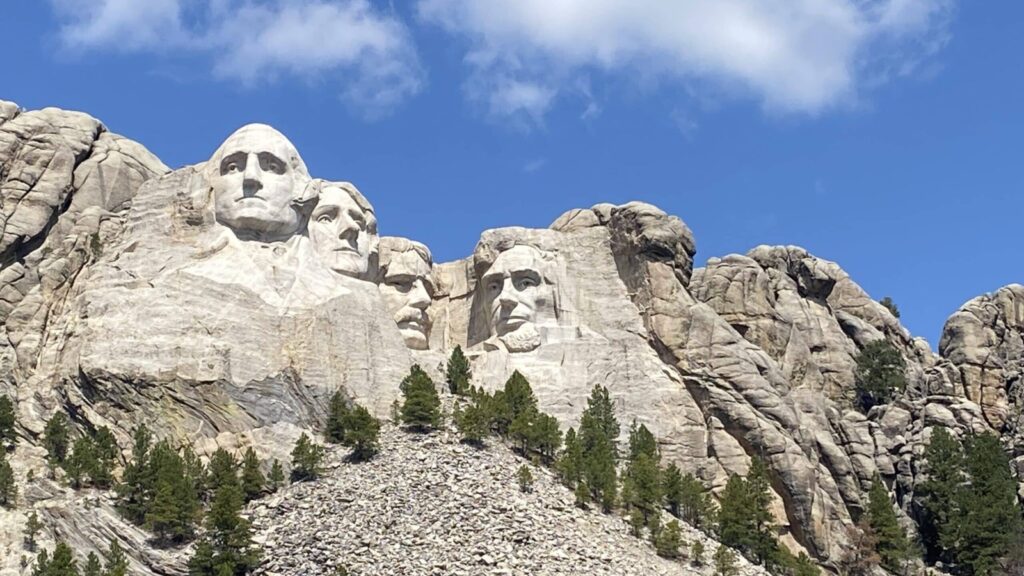
If you want in-person interactions with tribal communities, you’ll have the opportunity to speak with members of numerous tribes and hear unique perspectives, providing insight and appreciation into the richness and complexities of Native American culture.
If you’ve dreamed of seeing wide-open spaces and the beautiful national parks of the Dakotas, you can’t do better.
Distances are vast on the Great Plains; If you’re very active, long stretches on the coach might be hard to handle.
The itinerary includes frank discussions on the history of the Native American people, including the suffering they’ve been subjected to at the hands of European settlers. I would recommend it for kids at least 12 years of age.



